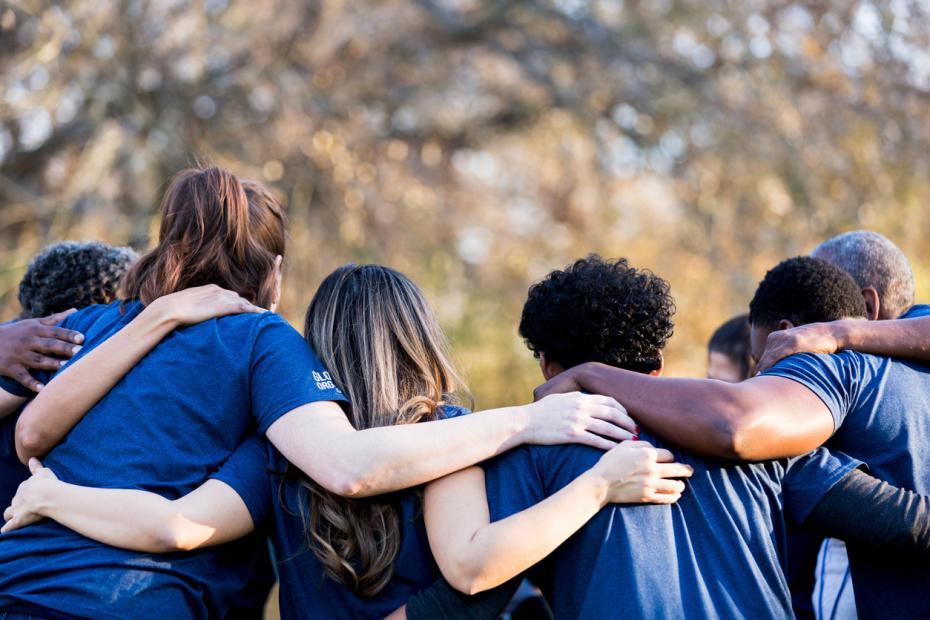
Students learn better on caring campuses – here’s how to create one

For many students, going to university is a passageway to adulthood, where they learn how to become self-sufficient and develop a support network on campus. For many others, this doesn’t happen. Instead, they discover the transition is marked by deep social isolation, with a profound sense of disconnection from peers, educators and university life as a whole.
But it doesn’t have to be this way. Together, faculty, staff, administrators and students can create caring classrooms and universities that foster belonging for everyone. This is something I witnessed first-hand during my time as a professor of practice at McGill University in Montreal, where I developed and taught a course on social isolation and social connectedness in international development.
- Peer review in multilingual classes
- You’re not alone: tips to help academics avoid social isolation
- Student support takes a village – but you need to create one first
Rather than narrowly focusing on curriculum and academic achievements, caring classrooms, campuses and universities – built on mutual trust and communication between all members of the post-secondary education community – work towards the crucial goal of preparing our young people to care about imagination, knowledge, inclusion and each other.
These efforts are even more important now, as the pandemic has exacerbated mental health issues in higher education around the world, leading to a rise in rates of anxiety and depression among students. A survey last year found that nearly half (47 per cent) of students in the UK felt that mental health difficulties negatively impacted their post-secondary education experience, and more than two in five (41 per cent) said they did not think their institution did enough to prevent such problems.
But new data indicates such mental health issues aren’t confined to the pandemic. A survey found that 41 per cent of all students enrolled in higher education in the US considered at least temporarily pausing their course in the past six months. Among undergraduate students, 69 per cent cited emotional stress and 59 per cent cited personal mental health reasons as the top reasons for doing so.
Addressing the student mental health crisis requires that university faculty, staff and administrators engage with the whole student – not just academically but socially, emotionally and professionally – so that these young people can find their passion and purpose during their university years. Doing so will go a long way towards instilling belonging as a central tenet on campus, combatting the social isolation that so many students face and allowing these young people to flourish.
Here are a few proactive steps faculty and staff can start taking today to help create caring universities where students of all abilities feel they belong.
Promote authenticity and vulnerability
To build strong, trusting relationships with students, professors should share personal stories and make themselves vulnerable, allowing students to feel more comfortable expressing their own views and seeking out help in times of need.
As an educator, I often share an important message with my students: “I see you and I believe in you.” It’s a reflection of my classroom ethos, which can be summed up as the three Rs: respect, recognition and reciprocity. By showing respect for students and their views, recognising their different abilities and contributions and engaging in reciprocity, educators can cultivate a learning environment that fosters community in the classroom and functions as a two-way street not only between students and educators but among students and their peers.
This allows students to feel seen, heard and valued, making them more open to the material professors are teaching. That, in turn, helps educators better tailor their lessons to students’ individual strengths, a process that also enriches teachers, who learn just as much from the students as the students learn from them.
Create a safe space
Not every student possesses the same level of potential or the same background when they first set foot on a campus. Instead of celebrating this diversity, universities can instead – knowingly or not –proliferate stigma on campus by tightly adhering to a rigid way of thinking about lesson plans and curricula.
Through reciprocity and mirroring authenticity and vulnerability, professors can create safe spaces where open discussion thrives, allowing for a wider range of perspectives to proliferate. I use this intuitive approach in my classroom. By sharing my own story and making myself vulnerable, I notice that students see me as more of an equal and feel more comfortable expressing their views. Teaching the whole student requires engaging with them in these different ways — through creativity, storytelling and deep listening.
Instilling in students not only the ability but the right to come to the table as they are helps cultivate greater understanding for all, eradicating stigmas around mental health, different backgrounds and other unique challenges. This, in turn, has the power to change the world by transforming students into advocates for inclusion not just at their universities but within society as a whole, as they continue to build belonging in their communities and their workplaces long after they graduate.
Cultivate inclusive thinking
Today’s one-size-fits-all model of education leaves much to be desired. Instead of teaching the whole student, the system focuses on specific performance goals and curricula. Two models of learning – social and emotional learning (SEL) and universal design for learning (UDL) – cultivate more inclusive thinking but are often only used in primary education.
Expanding both frameworks into higher education would help mould students into caring, connected and contributing problem-solvers who have the skills necessary to navigate our complex world every day. For example, SEL teaches students how to manage relationships and develop better social awareness, areas that are crucial when students graduate and move into the workplace. And while UDL is often used to address the difficulties faced by students with disabilities, it can, in fact, help all students regardless of their ability or background by facilitating a more flexible curriculum that allows educators more room to ensure students are fully engaged in the material.
In the end, no student should ever feel isolated during their time at university. Together, we can create campuses where students of all abilities truly feel that they belong.
Kim Samuel is visiting research fellow at Green Templeton College, University of Oxford, and visiting scholar at the Oxford Poverty and Human Development Initiative. She is founder and chief belonging officer of the Samuel Centre for Social Connectedness in Canada and author of On Belonging: Finding Connection in an Age of Isolation (Abrams Press, 2022).
If you found this interesting and want advice and insight from academics and university staff delivered direct to your inbox each week, sign up for the Campus newsletter.


